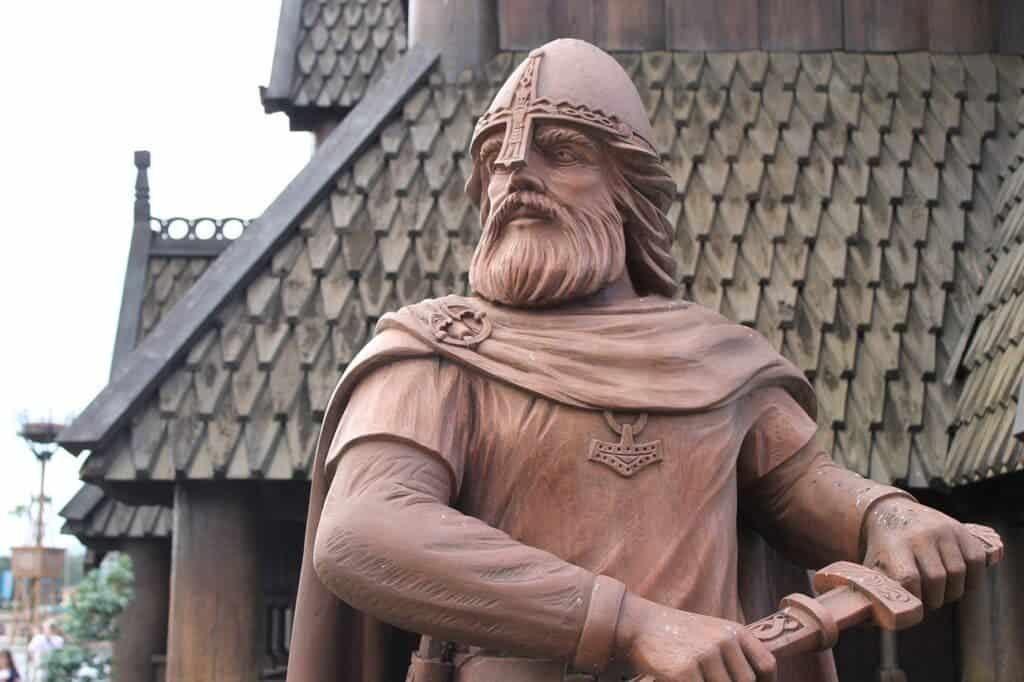
Between 750 AD and 1100 AD, a period in history known as the ‘Viking Age’, groups of Scandinavians exploited their superior seafaring skills to leave a long-lasting cultural, economic, and genetic legacy wherever they roamed — and they did so extensively. The Vikings’ expeditions ranged from North America to Asia’s central steppe.
Bearing all of these extensive and diverse connections in mind, it’s no surprise to learn that Vikings weren’t at all a homogenous, ‘pure breed’ of people. Instead, according to a new study, Vikings encompassed many genetically distinct groups of people, each with their own historical and cultural ties.
What’s a viking anyway?
When people hear of Vikings, many conjure the image of tall, muscular, bearded raiders hell-bent on wreaking havoc. However, this stereotypical image doesn’t do them justice. Vikings weren’t nearly as bloodthirsty as pop culture makes them out to be. For instance, they were engaged in buying and selling goods from places as distant as China and Afghanistan, weaving a network of trade and exploration from Russia to Turkey to Canada.
“They were people without boundaries,” says Wladyslaw Duczko, an archaeologist at the Institute of Anthropology and Archaeology in Pultusk, Poland. “I think that’s why Vikings are so popular in America.”
That’s not all. All of these diverse and distinct connections left a deep impression on both Vikings and the foreign people they visited, which are still imprinted in DNA.
In a new study, geneticists at the University of Copenhagen sequenced the genomes of 442 people who lived between 2400 B.C. and 1600 A.D. The DNA came from human remains unearthed at archaeological sites across Greenland and Europe.
These genomes were compared to those belonging to modern people, revealing that the Vikings were truly a diverse bunch. Their ancestry includes hunter-gatherers, Anatolian farmers, and populations from the Eurasian steppe.
The study also revealed that the Vikings were separated into four distinct groups, each associated with a genetic hotspot region: Denmark, Norway, and Sweden’s Gotland and Ӧland islands.
Each Scandinavian group had its own trade routes, contacts, settlements, and designated raiding areas. For instance, Swedish Vikings mainly roamed east, whereas Norwegian Vikings sailed towards western Europe where they reached Ireland, the Isle of Man, Iceland, and Greenland. Danish Vikings mostly went to England.
Remarkably, the genomic analysis showed that these distinct Vikings groups didn’t mingle too much among themselves. Instead, they mixed much more with a broad range of people they had encountered in their far-flung expeditions.
“It’s pretty clear from the genetic analysis that Vikings are not a homogenous group of people,” Eske Willerslev, a professor of ecology and evolution at the University of Copenhagen and director of its Center of Excellence in Genetics who led the Viking genome project, told National Geographic. “A lot of the Vikings are mixed individuals” with ancestry from both Southern Europe and Scandinavia, for example, or even a mix of Sami (Indigenous Scandinavian) and European ancestry.
“We even see people buried in Scotland with Viking swords and equipment that are genetically not Scandinavian at all,” he adds.
As for modern Scandinavians, few could properly call themselves ‘true’ Vikings. Just 15%-30% of modern-day Swedes share their ancestry with the people who lived in the same region 1,300 years ago.
All in all, the new study confirms what archaeologists and historians have long-suspected: Vikings comprise a diverse group that cannot be pinned to a specific ethnicity.
However, there are still many unanswered questions about the origins of Vikings. For instance, if many distinct genetic and ethnic groups of people called themselves Vikings, how did they band together, share the same culture? How did this process go about?
The findings appeared in the journal Nature.


